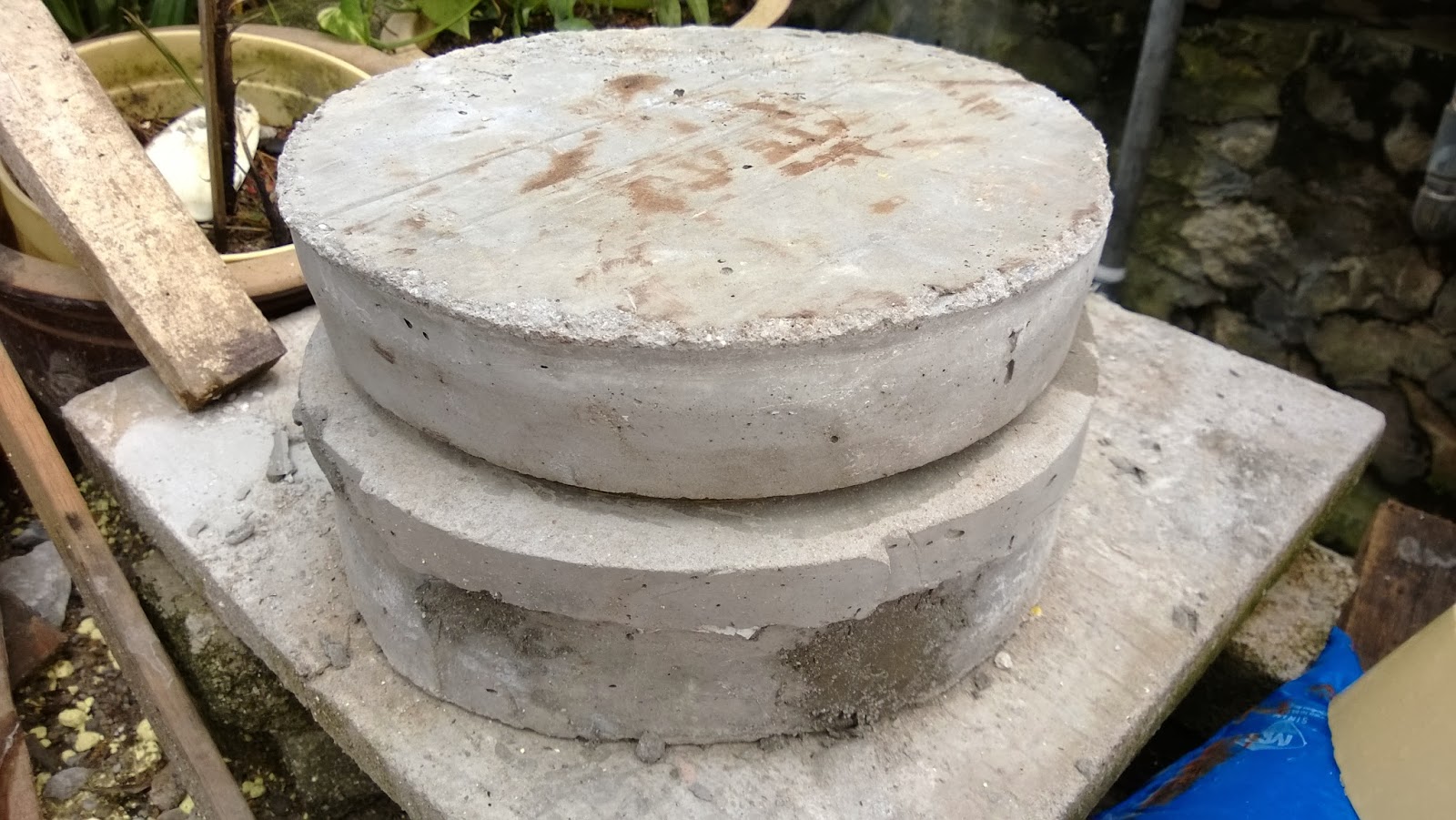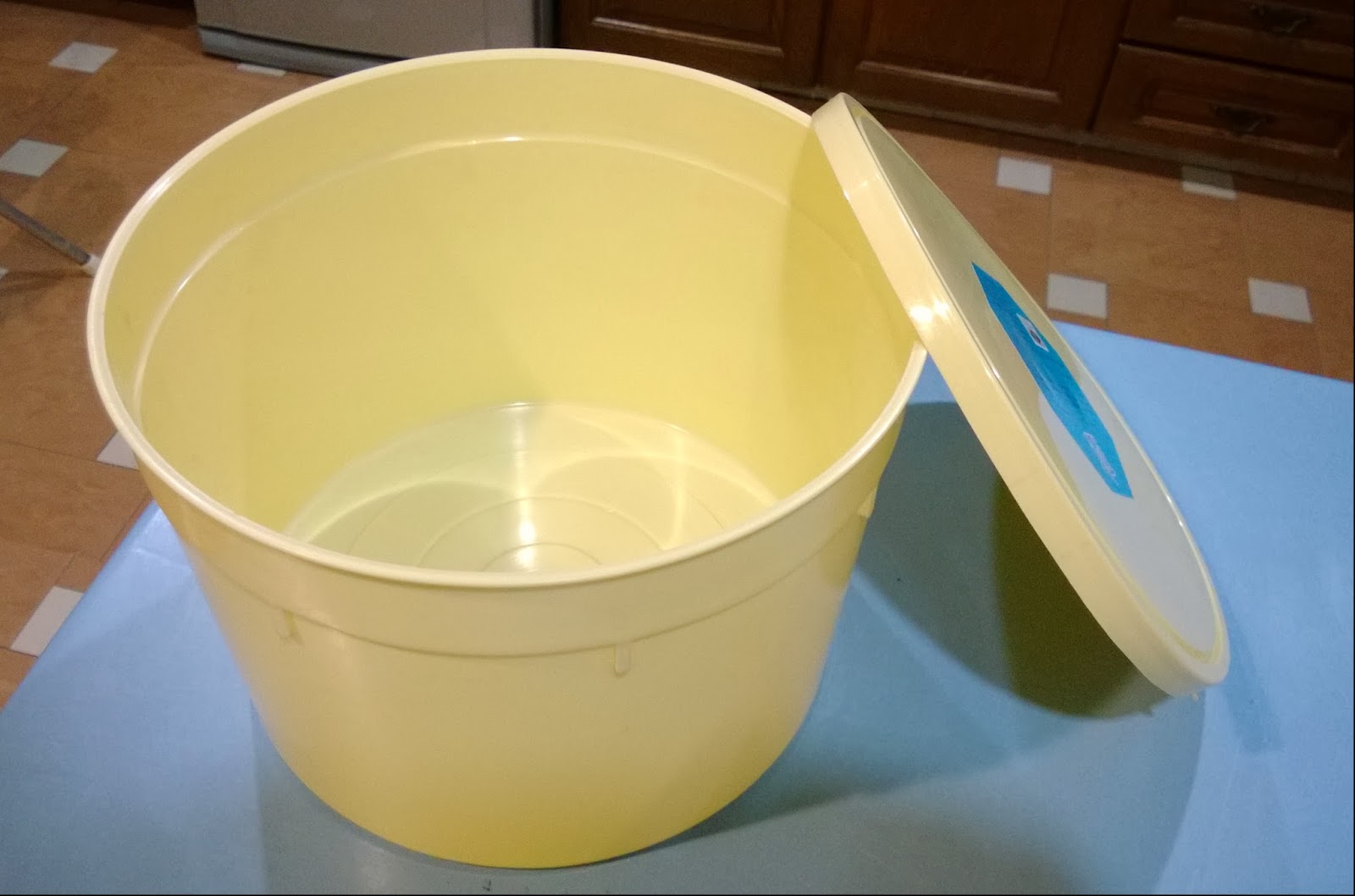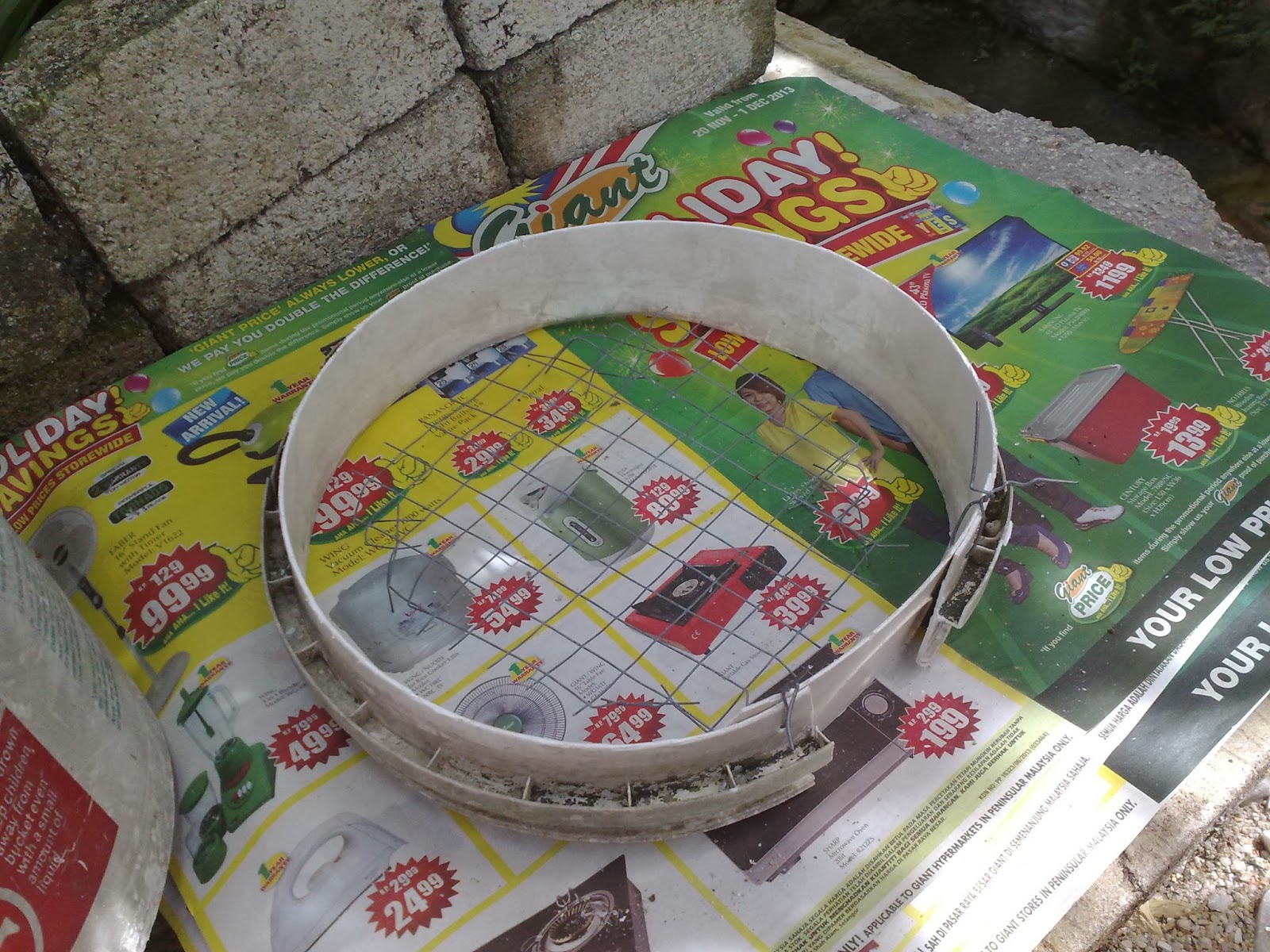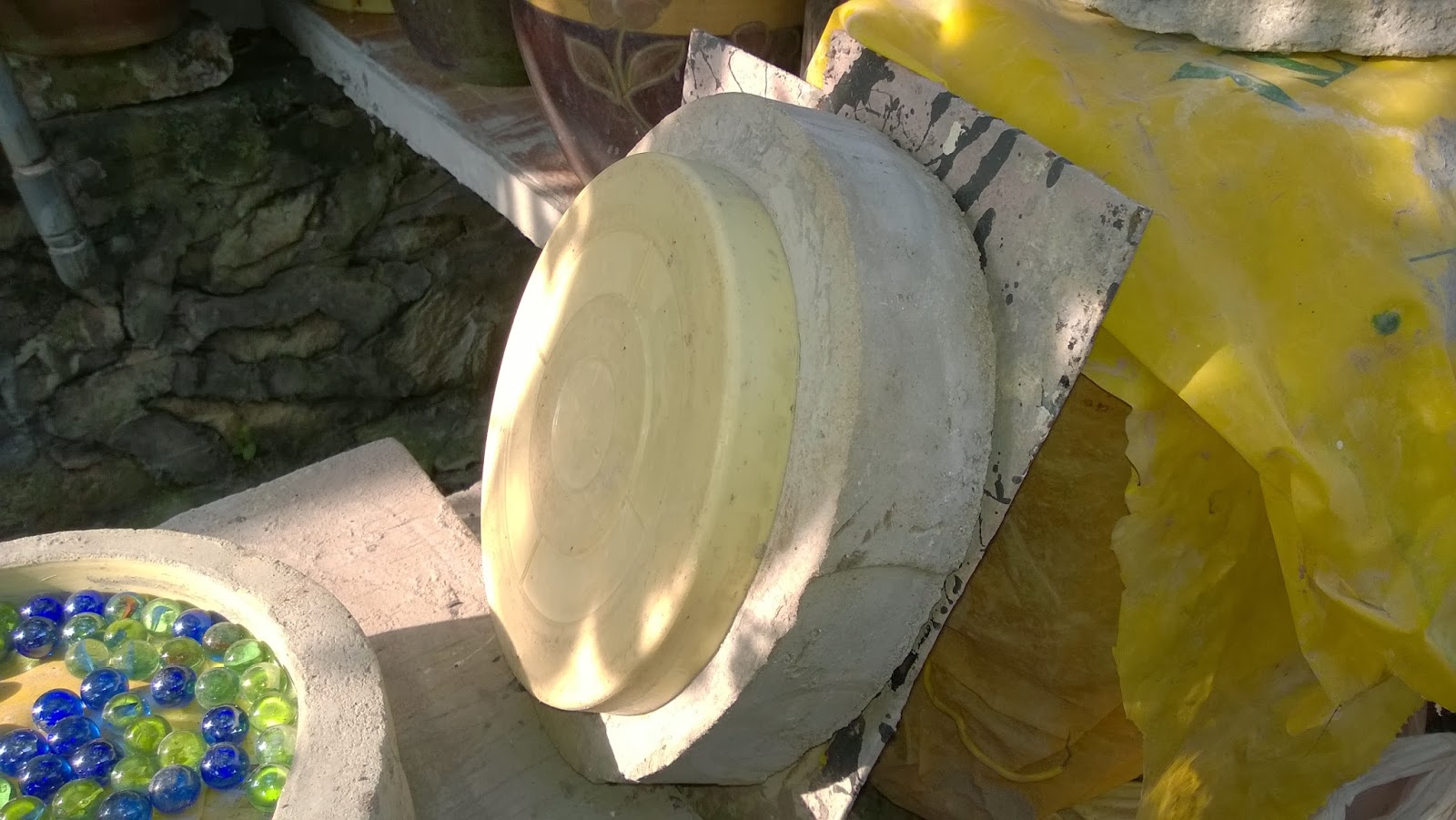 |
| Ferro-cement Owl Garden Stool |
An owl garden stool created with
ferro cement - my first such project using this incredibly simple method. So, what is
ferro-cement?
Ferro-cement is a mixture of common
Portland cement and sand applied over an armature or grid of wire mesh and small-diameter steel or iron construction rods.
Ferro-cement was called "ferciment" by its French inventor
Joseph-Louis Lambot who constructed a small boat in 1848 using cement
mortar (masonry) and iron reinforcement of iron rods and
chicken wire.
In 1855, "ciment armé" was first used by another French man,
Joseph Monier who created large urns, planters, cisterns and bridges. The bridge outer layer was sculpted to mimic rustic logs and timbers.
Ferro-cement is also known as ferro-concrete or reinforced concrete. It has a
wide range of applications including sculpture and prefabricated
building components. It has relatively good strength and resistance to impact and can be used to form relatively thin, curved sheets to make
hulls for boats, shell roofs, water tanks, roads, garden stools and ornaments etc.
The Making Of An Owl Garden Stool
You start off by putting your idea on paper and the Internet is a great resource for more ideas or information you might need as you embark on this exciting experience of ferro-cement construction.
 |
| Owl Garden Stool Drawing |
The Ingredients
 |
| Cement, sand and plaster lime mixture |
The mortar consists of three basic ingredients - Portland cement, sand and water.
Usually, a ratio of 3:1 is used for most projects. This is make up of 3 parts of sand and 1 part of cement. A ratio of 5:1 is considered the maximum limit before the cement loses its properties.
 |
| A bag of Portland cement |
Sufficient water is then added and mixed thoroughly with the cement and sand to form a consistency such that a line drawn with your index finger settles only slightly. Draw
the line about an inch deep on the surface of fresh mortar and see how fast the line collapses. Too much water and the line collapses immediately. The trick is to add a little water at a time and mix constantly. If the mixture is too watery, add more cement until you get the consistency that you required.
 |
| Warning - cement cause irritation and damage to eyes |
 |
| Putty lime |
Sometimes an additive such as putty lime is added to make the mortar more "sticky" as well as to "strengthen" the mixture. This helps the wet mortar adheres easily to vertical surfaces of the mesh.
 |
| A mold cut out from the top of a paint pail. This is use to make the base of the stool |
The Armature
The armature is the framework of iron rods and wire mesh constructed in the shape of object you are creating.
You will need some tools and materials to help you construct the armature.
 |
| Some tools and materials needed for the project |
You start off by constructing the armature. This is the foundation or skeletal structure of iron rods and wire mesh pressed and tied into the shape of your project. It can stand alone by itself or build upon a concrete base. For my project, I prefer the second option as it makes the armature construction easier.
I cut out the top section of a large plastic pail that was used to store emulsion paint. This will be the plastic mold to cast my armature base. I then constructed a simple framework of iron rods and wire mesh which I placed in the center of the plastic mold. Mortar is poured into the mold so that the wire mesh is completely enclosed in the mortar. The erect iron rods should be securely embedded in the mortar and become the skeletal structure on which the project armature is built upon.
 |
| Concrete stool base with iron rods frame |
 |
| Some tools for plastering or sculpturing |
A large paint pail is then placed in the center of the framework. I used the pail for two reasons - the side of the pail acts like a mold to support wet mortar being pressed through the other side of the wire mesh and it is also big and strong enough to support an adult sitting on it. The pail becomes an integral part of the framework. Secured the pail firmly to the iron rods with galvanized wire.
You do not have to use a pail for the backing. Any hard cardboard or crumpled old newspaper can be used instead as long as it can support wet mortar pressed through the wire mesh.
Another skeletal structure consisting of a framework of iron rods and wire mesh is then constructed at the top of the pail which would be the "seat" of the the garden stool.
 |
| A paint bucket is secured firmly in the center and a framework constructed at the top |
Mortar is then poured into this upper framework which would eventually become the top section of the garden stool. It would take a day or two for the mortar to set or harden.
 |
| Use enough mortar to completely cover the wire mesh and fill the mold |
When the "seat" is sufficiently hardened, the plastic mold of the framework is removed. The next step is to construct the armature or framework for the owl-shape garden stool all over this structure.
The armature consists of several layers of wire mesh of different sizes, pressed and formed into the required shape and then secured firmly with thin galvanized wire to the basic structure.
 |
| Several layers of wire mesh of different sizes form the armature of the owl garden stool |
Mortar is then placed over the entire armature. It is very important that you press the mortar firmly into the mesh and to cover it completely. During hardening, any gaps or air pockets in the concrete would form cracks and weaken the whole structure.
 |
| The side of the bucket supports the mortar as it is pressed through the wire mesh |
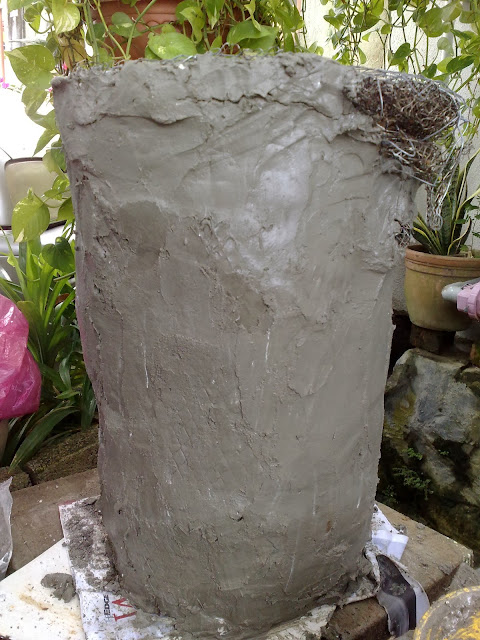 |
| Armature almost completely plastered with mortar | |
 |
| Sculpting into the desired shape |
Once the whole armature is plastered with mortar, the next step is to sculpt it into the desired shape. This is the most difficult part of the project as it requires some skill, lots of hard work and patience but it is also the most satisfying part as you begin to feel and see your creation taking shape.
The next step is the hardening or setting stage. During hardening, the assembly must be kept constantly moist by covering it with a damp cloth. This is to ensure that the
concrete is able to set and harden slowly and to avoid developing cracks
on the surface that can weaken the system.
 |
| Cover your completed projected with a damp cloth and keep it constantly moist |
The hardening or setting stage usually takes about two to four weeks to complete depending on the size of the project.
 |
| The concrete has hardened and ready for painting |
The Reward
 |
| My very own owl garden stool |
